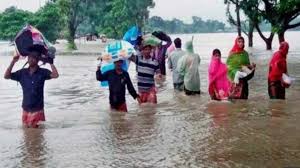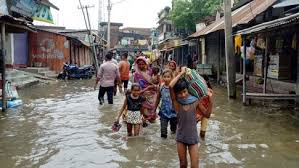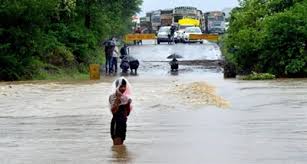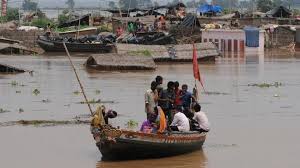Source: indiatoday.in
The flood situation in Bihar remained grim on Wednesday and is expected to worsen as neighbouring Nepal is witnessing heavy rainfall and the water from the overflowing rivers there may flow in to Bihar, an official said.
So far, 106 people have died while over eight million have been affected by the floods in Bihar. Thousands have been displaced across the state’s 12 districts as rivers are flowing above the danger mark at several places, officials said.
An official from the Water Resources Department said that heavy rainfall in Nepal since Monday is bound to worsen the situation in Bihar.
Latest reports suggest that the water level in major rivers is continuing to rise and embankments have been breached at several places. Water is also spreading to new areas, forcing people to take shelter at safer places, officials said.
Bihar Water Resources Minister Sanjay Jha told the media that embankments were breached at several places due to heavy rainfall. “We are working to repair embankments,” he said.
Jha said the government is doing everything possible to help the flood victims.
According to Wednesday’s report on the website of the Disaster Management Department, more than eight million people living in 1,238 panchayats in 12 districts have been affected by the floods that were caused by heavy rain in north Bihar and the catchment areas of major rivers in neighbouring Nepal.
Taking serious note of the flood situation, Chief Minister Nitish Kumar has directed the airdropping of relief, particularly food packets, in the affected districts.
Opposition legislators have been raising the issue of the failure of the state government to protect embankments and to carry out adequate rescue and relief operations.
The Disaster Management Department said relief and rescue operations were continuing in the flood-affected areas. A total of 26 companies of the National Disaster Response Force, the State Disaster Response Force and the Seema Sashatra Bal have been deployed in the affected districts to carry out rescue operations.



